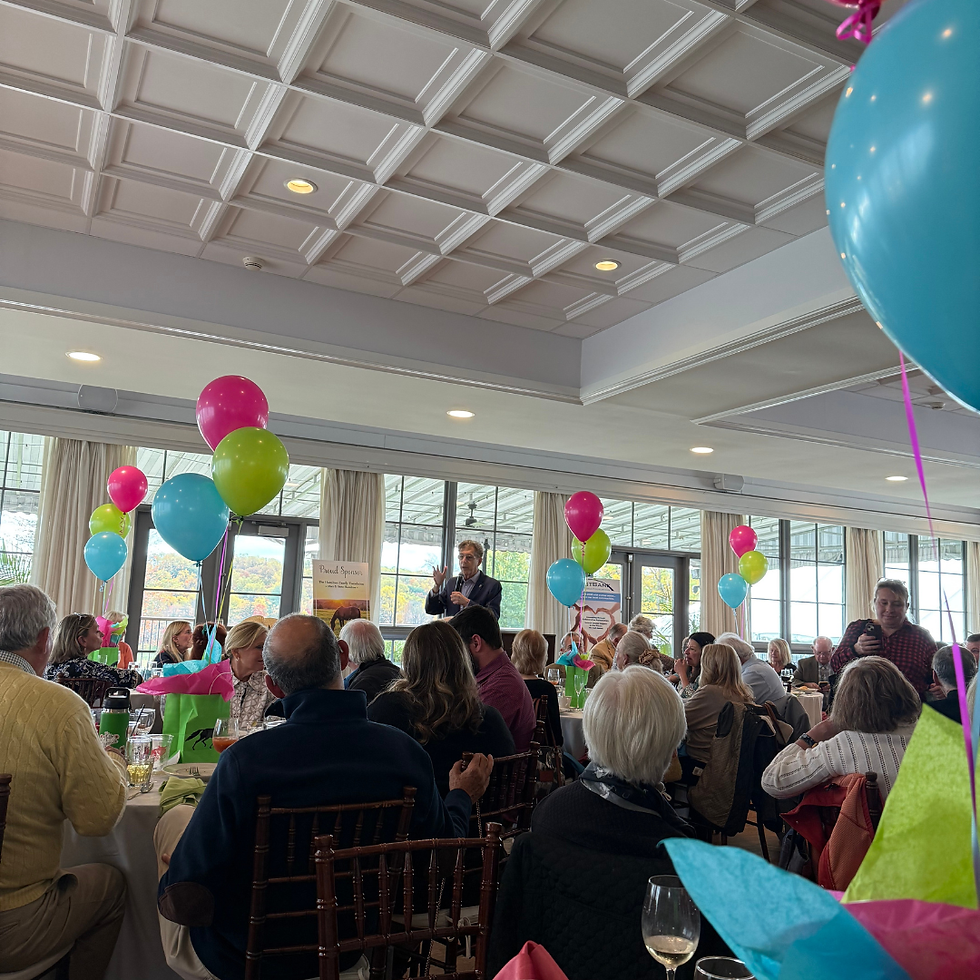Safety Tips to Follow Around Equines
- Ryerss Farm

- Jul 5, 2022
- 3 min read
Following basic horse safety rules is essential when handling and riding horses. Whether it is your first time riding an equine or you have been riding for years, taking safety precautions will prevent accidents and injuries in almost any circumstance. Feeling overwhelmed when in the presence of a horse is completely normal! They are large beings that can be startled easily, resulting in various consequences. Some horses are more reactive than others, so working around a calm and quiet horse is the best bet for beginners. Read on to learn more about staying safe around equines!
Approaching: To alert a horse of your presence, be sure to speak to them first. This prevents their startle reflex, which can cause much harm to any human in the horse’s way. To avoid a horse’s “blind” spots, approach them from the side if possible. Then, touch them on the neck or shoulder in a firm, but gentle stroking motion.
Leading: Use a lead rope attached to the horse’s halter and be sure not to coil the end of the lead rope around your hand. This will avoid loops on the lead tightening. Instead, fold the rope back and forth, and hold on tight to the middle of the folds. This movement will prevent being pulled over and ultimately dragged by the horse. Make sure that you never wrap a lead rope around any part of your body. Lastly, do not allow the horse you are leading to touch noses with an unfamiliar horse. This can lead to the two horses suddenly biting or striking one another.

Tying: Tying is a crucial tool to use when learning how to safely care for an equine. The tie knot should be as high as the horse’s eye, and the distance from the knot to the halter should be no more than the length of your arm. It is important to tie the horse to a safe, solid object using a quick-release knot or breakaway string. Then, connect the horse with a halter, lead, and reins.
Feeding: All equines are different, making some easier to feed than others. Each horse has a different requirement when it comes to the amount of food and nutrients needed. It is essential to understand each horse’s dietary habits when it comes time to feed them. When feeding a horse treats, try to use buckets or tubs. Horses can quickly become greedy and mistake fingers for food!
Traveling: Never struggle with a horse when getting them into a trailer; this can be extremely dangerous for both the horse and owner! To keep all parties safe, horses should be tied up when hauled. Be sure they have enough room to move their head and neck, and try to keep them away from other horses in the trailer. After the horse is in the trailer, close the back door or ramp before you hitch them to the trailer tie. When unloading, untie the horse before opening the back of the trailer. This is done so they do not back out on their own and hit the end of the rope, causing them to panic and pull back.

Grooming: Be sure to stand near the horse’s shoulder or beside the hind legs. This will avoid any injuries to yourself or the horse during a grooming session. When grooming, standing directly in front of or behind an equine can be extremely dangerous, so be sure that the horse knows where you are at all times. If walking behind the horse is necessary, stay very close to them, where a kick would have no real force. You can also stay far enough away to avoid kicking range.
Learning proper horse safety is the first step in having a loving relationship with any horse! Kicking, trampled toes, or bites can all be avoided by following these safety precautions. You and your horse are a team, but it is important to remember that you as an owner are always the leader. Make sure to follow these tips to ensure a fantastic relationship between you and your equine and to keep everyone involved safe, happy, and healthy!

.png)







Comments